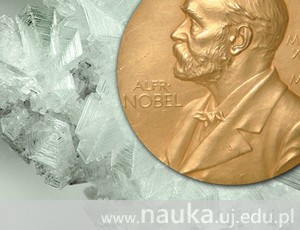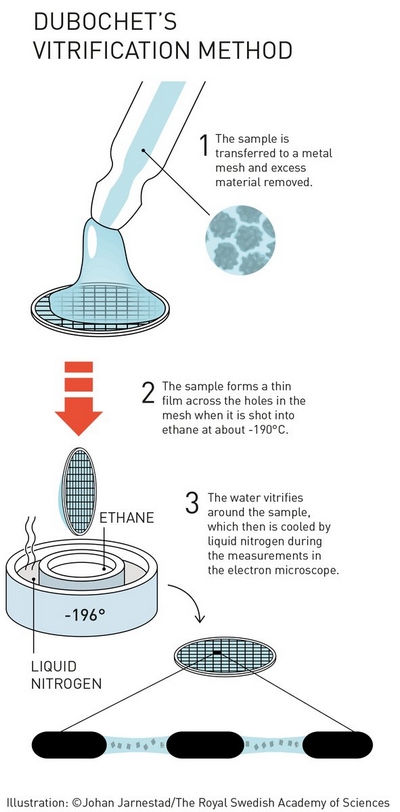
This year’s Nobel Prize in Chemistry was awarded to a Swiss-German-British trio of scientists: Jacques Dubochet (University of Lausanne), Joachim Frank (Columbia University) and Richard Henderson (MRC Laboratory of Molecular Biology) have been awarded for their developments in transmission cryo-electron microscopy. We asked Prof. Zbigniew Sojka from the JU Faculty of Chemistry to comment on the verdict.
The method developed by awarded researchers allows for three-dimensional observation of objects in atomic resolution, in their natural environment and in different conformations (i.e. specific spatial arrangements of atoms in a chemical compound). The breakthrough observation was carried out by Richard Henderson, who became the first person to successfully acquire an image of a protein’s structure and shape, thanks to employing lower-energy electron beam.
 Jacques Dubochet contributed to this by drawing up an innovative technique of sample preparation via the process of rapid cooling (pictured on the right), which causes vitrification (i.e. transformation of a substance into glass) of a natural water environment. Not only does it preserve the biological samples, but also allows for an easier study.
Jacques Dubochet contributed to this by drawing up an innovative technique of sample preparation via the process of rapid cooling (pictured on the right), which causes vitrification (i.e. transformation of a substance into glass) of a natural water environment. Not only does it preserve the biological samples, but also allows for an easier study.
Finally, Joachim Frank developed mathematical methods of advanced analysis of two-dimensional electron microscope images and their reconstruction into sharp, three-dimensional images.
Observing the changes
Transmission cryo-electron microscopy is a milestone in molecular and structural biology, pharmacology, medicine, biochemistry, and macromolecular and polymer chemistry. Imaging of structure, shape, and even acquiring ‘stroboscopic’ photographs showing the dynamics of biological processes and changes in protein shapes will allow us to design advanced drugs and therapies for such serious diseases of affluence as neurodegenerative diseases (Alzheimer’s, Parkinson’s, multiple sclerosis) or cancer.
It’s worth mentioning that this technology will soon become accessible at the Jagiellonian University. Dr Sebastian Glatt, head of the Max Planck Laboratory in the Małopolska Centre of Biotechnology, has received funds to secure a high-resolution transmission cryo-electron microscope. Additionally, studies employing transmission electron microscopy are conducted both at the Institute of Zoology and Faculty of Chemistry.
Original text: www.nauka.uj.edu.pl





